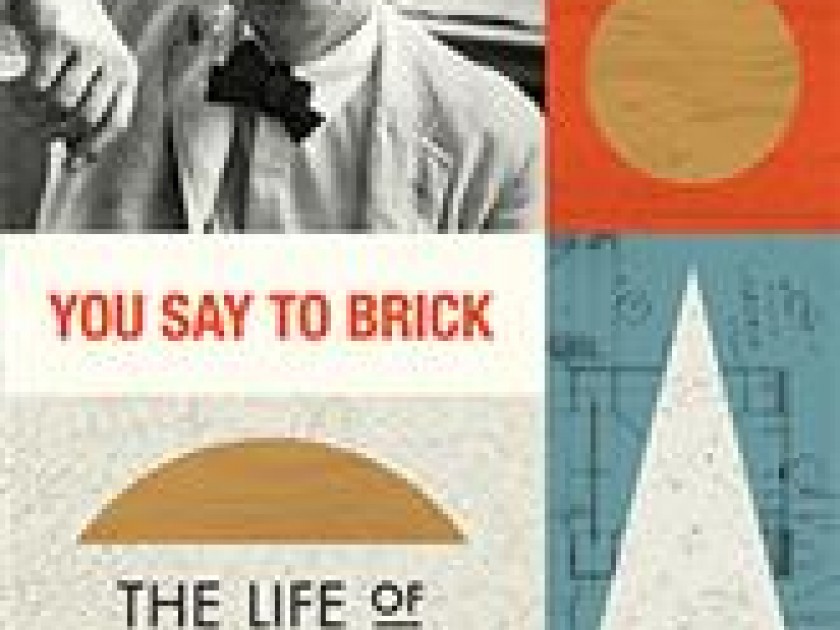
Wendy Lesser is the author of You Say to Brick: The Life of Louis Kahn. Wendy is guest blogging for the Jewish Book Council all week as part of the Visiting Scribe series here on The ProsenPeople.
As usual with my books, there is a long story and a short story. The long story begins many decades ago, when I was in high school and a family friend, an architect, made me think that architecture was a great career. Gradually this morphed into an interest in city planning, and by the end of high school I was working for a city planner’s office in San Francisco.
In college my focus shifted to literature, but I was still sufficiently interested in the earlier topic to write my undergraduate thesis on a turn-of-the-century Scottish city planner named Patrick Geddes. Like Louis Kahn, the subject of my biography You Say to Brick, Geddes was a visionary, a man way ahead of his time, who spoke in his own peculiar language about things that mattered deeply.
Fast forward to 2003, when Nathaniel Kahn’s wonderful movie, My Architect, came out. Though by this time I had seen and admired the two art galleries Kahn designed at Yale, I hadn’t really focused on the architect himself until I saw Nathaniel’s film about his father. It is a terrific documentary, deservedly nominated for an Academy Award. I loved it for what it did with the essay-film form, but I also found myself attracted to the subject himself. Kahn’s personal life was fascinating — he had three different children with three different women, even as he remained married to the mother of the oldest — and so were the glimpses of his architecture the film offered. I saw the movie twice in the year it came out (no easy thing to do, in those pre-streaming years), but still it never occurred to me that I might someday write about Louis Kahn myself.
Now for the short story. I was casting about for a new book idea, and in November of 2012, on a casual Sunday walk, I happened to visit the Franklin D. Roosevelt Four Freedoms Park on Roosevelt Island in New York. The minute I set foot on the monument — designed by Kahn in 1973, but left unfinished when he died in 1974 and not completed until 2012, nearly four decades later — I realized I had a new subject. The structure spoke directly to me about openness and containment, about freedom and restraint, with the kind of expressive but non-verbal communication one can find in arts like architecture, painting, music, and dance. I had known from Nathaniel’s movie that his father led an unusual life — excellent material for a biography — but what really got me interested in writing the book was my fortuitous encounter with one of Kahn’s masterworks.
As my research wore on, I discovered so many interesting new facts about Kahn’s life that at times I joked, “Maybe I should ignore the architecture and just write about the life.” And I did, in the end, manage to fit most of those intriguing discoveries into the book. Through it all, my admiration for the architecture continued to grow. I visited all the sites of his masterpieces — from the Salk Institute in La Jolla to the National Assembly Building of Bangladesh in Dhaka — and the more of Kahn’s work I saw, the more I loved it — and the happier I was to write about it.
A skeptic might interrupt me at this point to question: what does a literary person know about architecture? How did you ever have the chutzpah to write about a technical field like that?
Well, I do have a lot of chutzpah. Previous books of mine have been about a lawyer handling a death-penalty case, a theater director’s methods, and a composer’s life — and I probably know less about law, drama, and music than I do about architecture. (That’s true of all of us, I would guess, since we all live in and surrounded by architecture, using it every day.) But my real justification for venturing onto this ground is to try to explain things in non-technical terms to other people like me, people who don’t have a degree in architecture but still find its works and processes entrancing. So, for instance, when I met with Kahn’s concrete consultant, Fred Langford, or his engineer, Nick Gianopulos, to find out how they contributed to the collaborative enterprise, I would say, “Wait, Fred, tell me that about that form construction again, but in language I can understand,” or, “Hold on, Nick, what do you mean by ‘parallel canted joists’?” In each case, I would be rendering into English — my language, our language — the technical secrets that lay behind Kahn’s magnificent works.
Oh, and the weird title? It comes from a story Kahn often used to tell: “You say to brick, What do you want, brick? And brick says: I like an arch. And you say: But I could put in a concrete lintel and it would be much cheaper. What do you think of that, brick? And brick says: I like an arch.” That sense of resistance to outside advice, of remaining true to one’s essence in the face of all obstacles, was what I found not only in the materials Louis Kahn lovingly used, but in the man himself.
Wendy Lesser is an American critic, novelist, and editor based in Berkeley, California. She is a member of the American Academy of Arts and Sciences and the founding editor of The Threepenny Review. Wendy has received fellowships from the Guggenheim Foundation, National Endowment for the Humanities, the Dedalus Foundation, and the New York Public Library’s Cullman Center for Scholars and Writers.